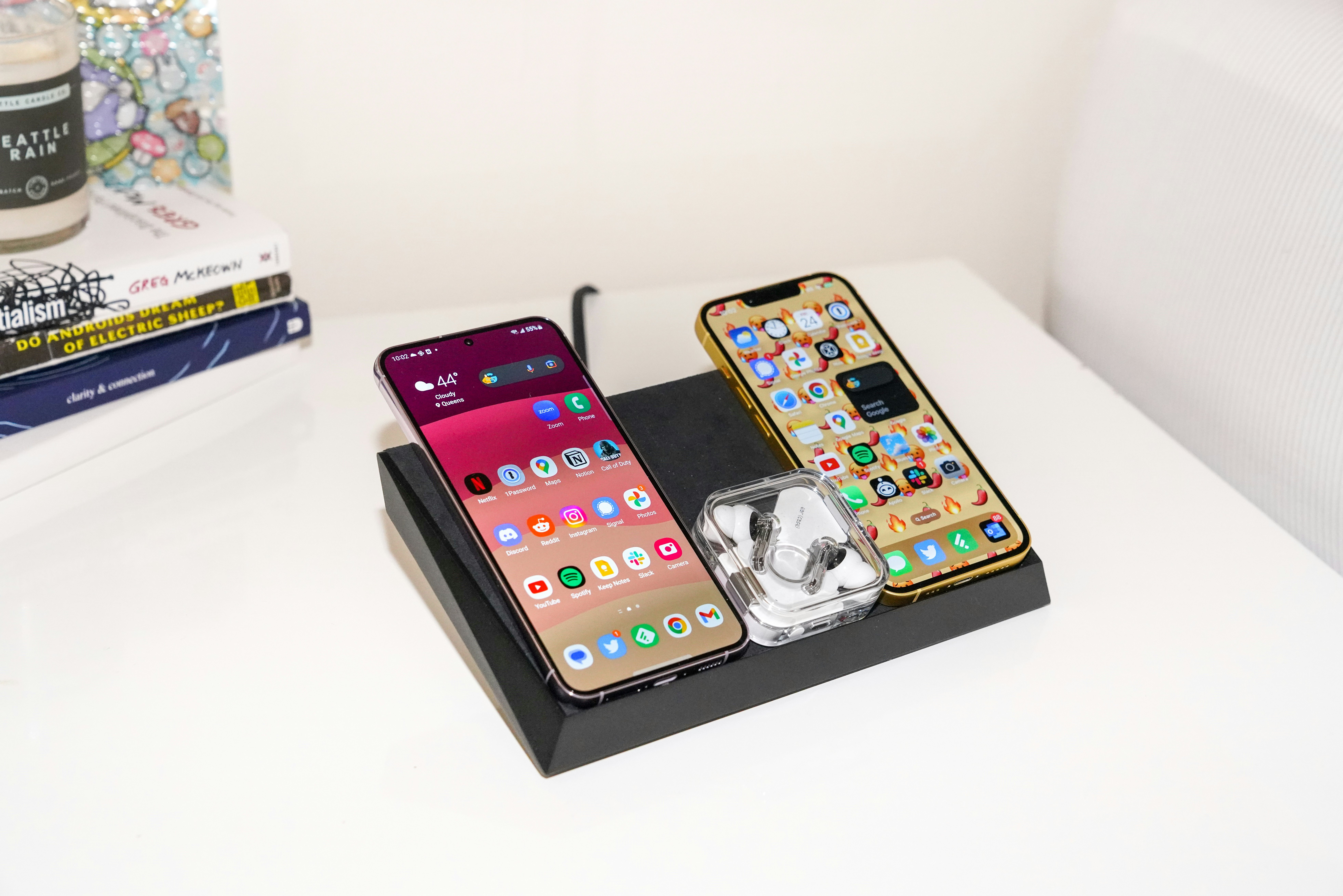
Let's get one thing out of the way: Tesla's wireless charging pad (aka Wireless Charging Platform) is expensive at $300.
If you simply want a Qi-based multi-device wireless charger for your smartphone, you can get one for under $100. Many single-device wireless chargers sell for under $75. Apple's own MagSafe charging puck for compatible iPhones is $40.
But if you want not just a wireless charger, but one that lets you place up to three Qi-based devices anywhere on its Alcantara-covered surface — a convenience Apple's canceled AirPower once promised — then Tesla's Wireless Charging Platform, made in collaboration with the wireless charging experts at FreePower, definitely delivers. And importantly, with style and safety.
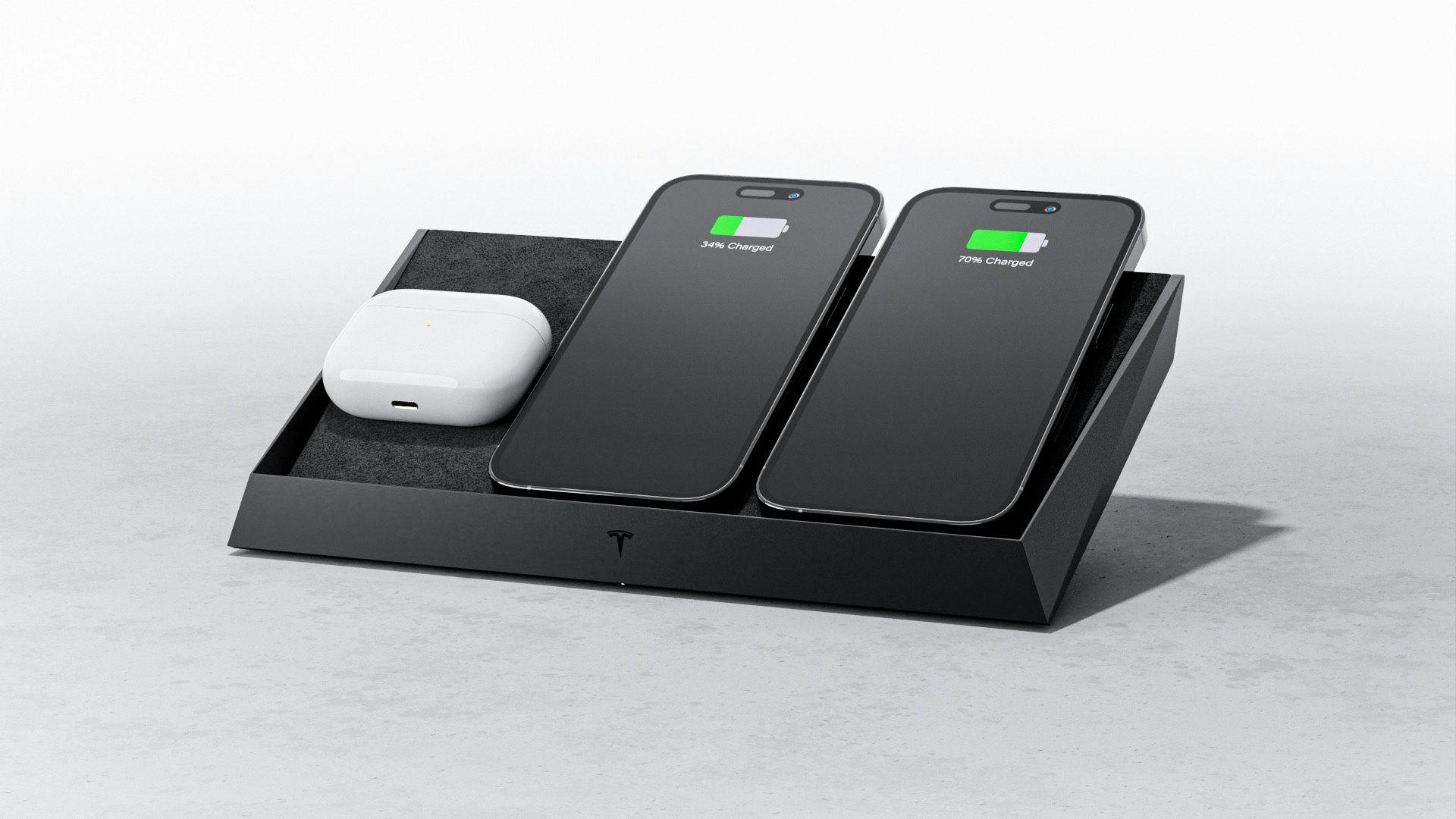
Premium materials
This is not just Tesla slapping its logo on a third-party wireless charging pad and calling it a day, says FreePower CEO Jake Slatnick.
“It's really a fully custom product from Tesla in terms of the design, and we did the technology inside,” he says. “Tesla is a very technology-forward company of course, but also really cares about experience. We share a very similar ethos; I would consider this to be the most advanced wireless charger on the market. The underlying purpose of the technology is to enhance user experience to create a better wireless charging experience.”
“I would consider this to be the most advanced wireless charger on the market.”
Slatnick says Tesla came knocking at FreePower's door, not the other way around. “Tesla saw the Gen 1 [FreePower charging technology] and I think the design studio really appreciated the better experience wireless charging [in Gen 2] which is very similar to the experience that Apple had envisioned for wireless power and AirPower, which they announced in 2017 and canceled.”
Naturally, coming from Tesla's own industrial design team, the Tesla Wireless Charging Platform's sharp, angular frame resembles the Cybertruck. Though the EV pickup truck has yet to ship, its already-iconic brutalist facade is carried through to even the 65W charging adapter. It's a very nice touch if you appreciate product design details as I do.
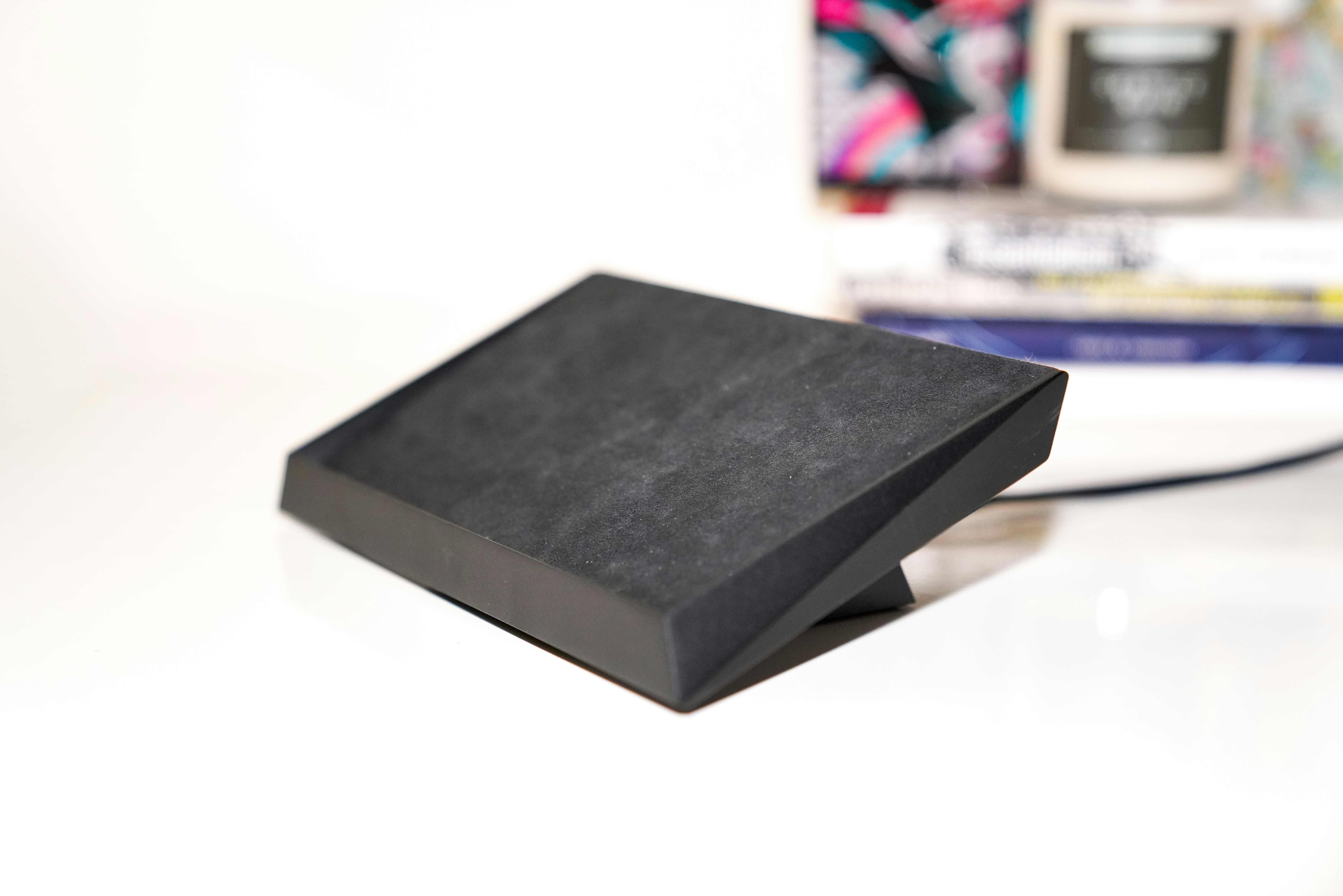
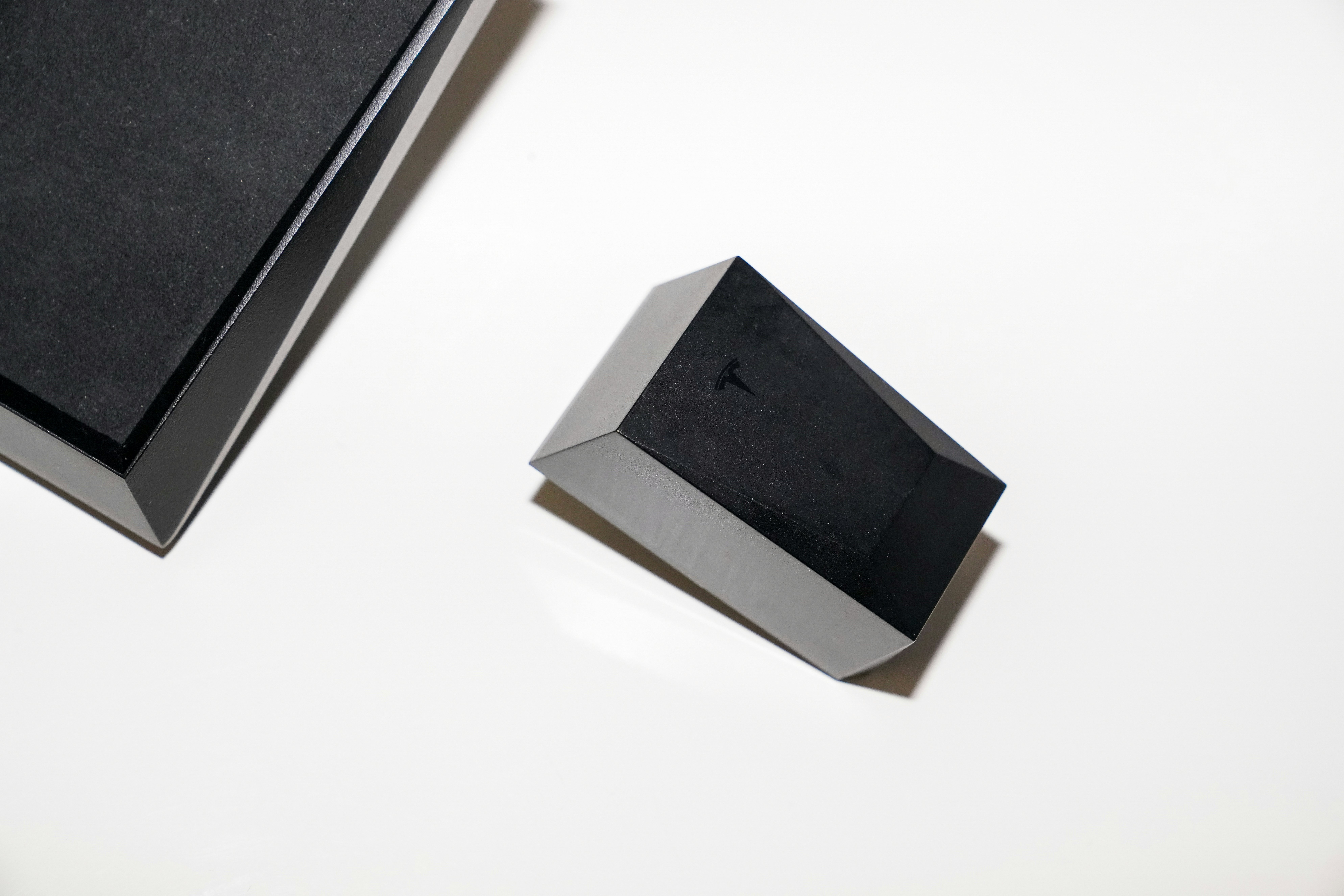
“We really can create the surface [charging power] technology in any X or Y dimension, any shape or size,” says Slatnick. “So they very much so specified the size and the design.”
Most wireless charging pads look cheap and feel cheap. They're often made of plastic or rubber or both. The materials on the Tesla Wireless Charging Platform are anything but cheap or flimsy. The second you lift the wireless charger out of its equally sleek box you know it’s a high-quality gadget. There's a sturdy heft to it much like a weighty mechanical keyboard such as the Mode Sonnet or Keychron Q1 Pro that I absolutely adore.
The charging stand is made of black-anodized aluminum and weighs 747 grams (1.6 pounds) on its own and 1,026 grams (2.26 pounds) with the included magnetic stand that props it up at an angle. The charging surface is covered in Alcantara, the same soft synthetic fabric that's used in Tesla's electric cars and accessories like the Type Cover keyboards for the Surface Pro. On a desk or bedside table or any surface, the dense body ensures the Tesla Wireless Charging Platform doesn't slide, something I can't say for the Samsung and Anker wireless chargers I have in my apartment.
Smart and safe wireless charging
In 2020, I reviewed the Zens Liberty, one of the first AirPower-like wireless chargers, to hit the market. The $170 charging pad uses 16 stacked charging coils to create a surface where you can place Qi-equipped phones, wireless earbuds, or smartwatches anywhere on its surface — no need to find the wireless charging alignment sweet spot that you often have to with other wireless chargers.
I liked the Zens Liberty for the most part, but I never felt safe using it long-term. It's got a built-in fan to cool all of its coils, but the smell of the heat — a burning electronics-like odor — always freaked me out; some customers on Amazon shared similar concerns in their reviews. I have not noticed any burning smell with the Tesla Wireless Charging Platform even though it has 30 total charging coils and no internal fan. I asked Slatnick what safety measures are in place to reassure buyers that their Tesla Wireless Charging Platform won't catch on fire. It’s widely reported that overheating was a major reason Apple canceled AirPower, and it only had 21-24 coils.
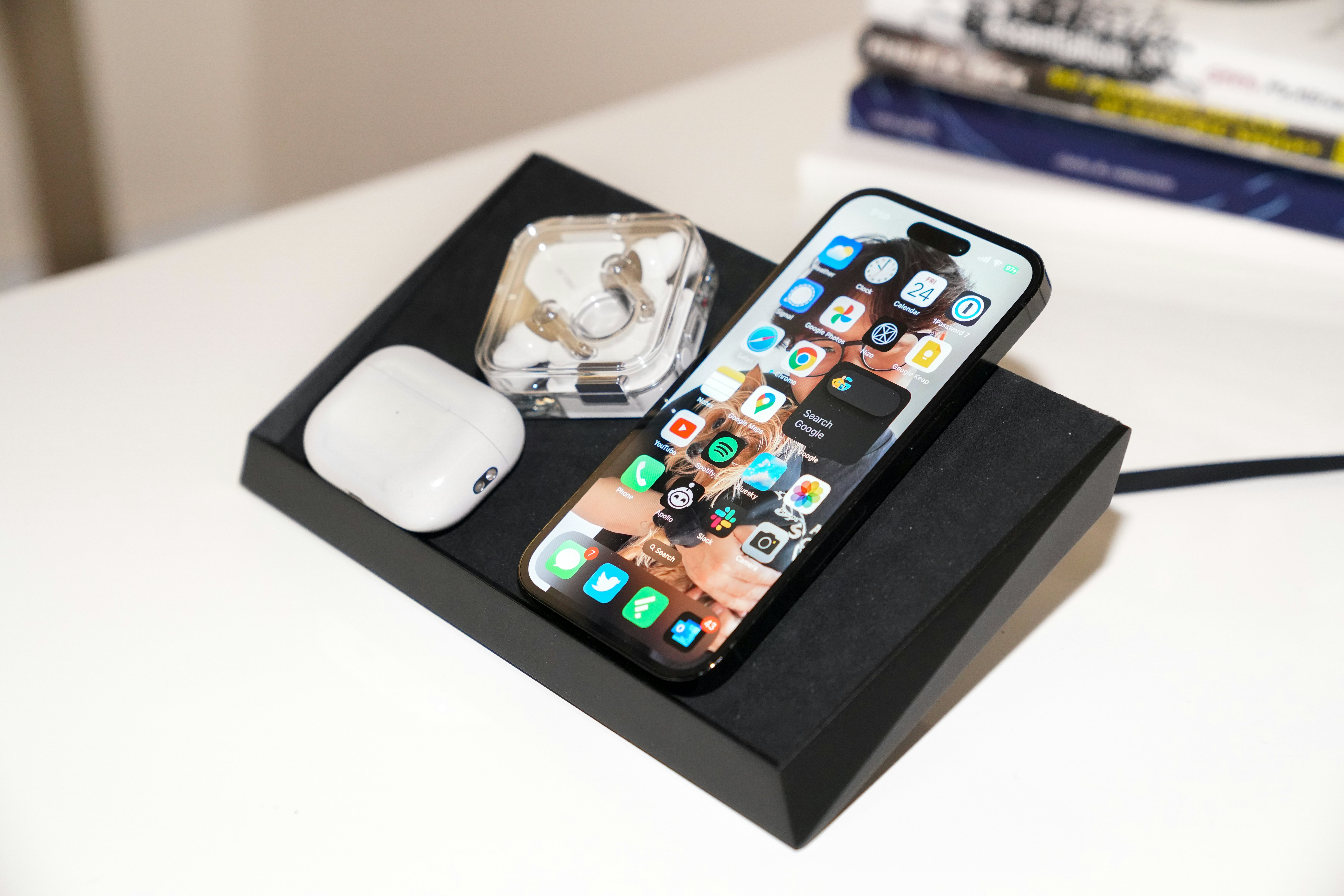
“We have a lot of thermal sensing within the system so if [the FreePower charging] does start to get warm, it'll either throttle back the power or shut off altogether,” says he says. “Although it's very rare that something like that would happen. You would probably have to have multiple devices on the pad and in a warm environment like an 85-degree Fahrenheit room to create an issue like that.”
Slatnick also says that each device on the Tesla Wireless Charging Platform is only charging at its maximum-allowed wireless charging speed. For most Android phones, that's at 15W; iPhones are limited to 7.5W.
“A phone might need, seven watts or 15 watts or whatever it might be and we'll deliver precise power to those devices. And if those devices start getting warm, because of the transmitter; because of their own temperature; they will also have the opportunity to slow down the charge speed to regulate the heat. So there are several layers of thermal algorithms and thermal protections put in place. Fundamentally, it's a very efficient system so there's less heat that's created to begin with.”
This charging throttling might sound like a big red flag, but it's not. It's a safety thing. As Slatnick points out to me, there are regulations that prevent lithium-ion batteries in mobile devices from going above 45 degrees Celsius (113 degrees Fahrenheit) for most of the charge. That's why phones fast charge for only a duration (usually from 0-80 percent) and then the last leg is slower.
“We have different thermal materials inside of the design that takes the heat from the surface through the metal and into the ambient environment.”
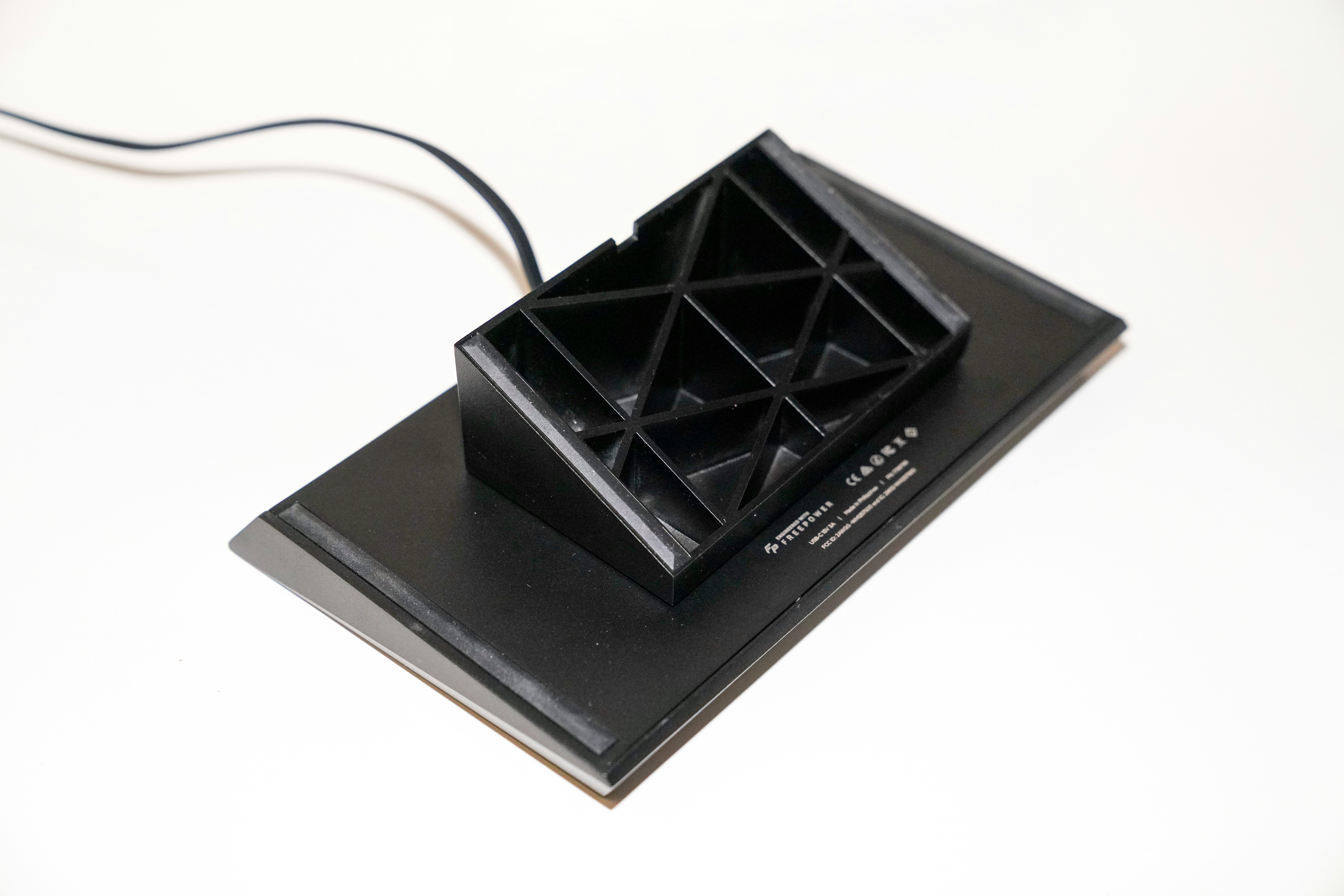
The aluminum build also acts as a heatsink of sorts. In addition, the Alcantara “surprisingly handles pretty well thermally,” Slatnick says. “We have different thermal materials inside of the design that takes the heat from the surface through the metal and into the ambient environment.”
And if all of that's not enough reassurance, the included stand also helps with airflow. “The stand will help actually. If [the Wireless Charging Platform] is laying flat, there's less surface area dissipating heat into the ambient nightstand or a desk or whatever.”
Luxury Convenience
There's this belief that all consumer tech should be affordable. Who doesn't want to pay less for the latest and greatest technology? But there’s also this thing called luxury — and when it comes to cutting-edge gear, the ticket price is often high to get first access. How much is convenience worth to you?
Is the Tesla Wireless Charging Platform for everyone? Absolutely not. Does it work as advertised? It works really well. I dropped several devices — in various orientations — on the wireless charging pad, including the iPhone 14 Pro, iPhone 14 Plus, AirPods Pro 2, Nothing Ear 2, Samsung Galaxy S23, Pixel 7, and even an old Qi-based Samsung Galaxy smartwatch, and it detected them without issues. Not all at once, mind you. As I said earlier, the Tesla Wireless Charging Platform supports up to three devices at once — usually two phones and a pair of wireless earbuds, one phone and two wireless earbuds, or three wireless earbuds. It is possible to charge three phones at once — I successfully charged the yellow iPhone 14, an iPhone 14 Pro, and an iPhone 13 mini — though the iPhone 14 was not entirely laid flat (still worked!). If you’ve got a family of iPhone minis and iPhone SEs (who am I to judge?), they’ll just fit.

As with the Zens Liberty and the Nomad BaseStation Pro (the first charging pad to use FreePower's Gen 1 wireless charging tech), the surface of the Tesla Wireless Charging Platform cannot charge an Apple Watch of any generation because Apple uses its own magnetic charging system, not Qi. That's a bummer, and why those two chargers have a separate charging puck for the Apple Watch. Does the lack of Apple Watch charging support put a damper on the $300 price tag? A little bit, but my god — the convenience of not having to align devices perfectly with a wireless charger is a quality-of-life upgrade that I didn't think I needed.
If you are the type of person who lives in the future today and you are willing to pay to experience it, the Tesla Wireless Charging Platform will not disappoint. Tesla and FreePower could have made something cheaper, but that would have felt like a shameless cash grab as opposed to what they’re shipping, which is premium through and through.
Photographs by Raymond Wong







